PMI-ACP Study Notes: What is Agile?

[PMI-ACP® exam study notes] Traditionally, project management follows the waterfall approach, i.e. a project management plan is created at the very beginning to guide the project to completion. Agile project management, which comes into being in the mid 1990s, represents a shift in paradigm in the world of project management from following a plan to responding to changes.
Article Highlights
What are “Methodologies” in Project Management?
A methodology is a set of processes and practices performed in a specific way to accomplish a project.
- A methodology can be thought of a specific way to carry out a project in order to reach a goal, it may include workflows, processes, deliverables, approval path, checklists and policies, etc. A well-developed methodology is important to achieve project success in an effective and efficient manner.
- Agile can be considered as a family of project management methodologies, including XP, Scrum and Lean, etc.
Traditional Waterfall Approach
- Following a path/plan
- Make reference to the Deming Cycle: Plan-Do-Check-Act: analysis -> planning -> documentation -> carry out the plan -> compare results w/w plan -> take corrective action
- The project manager dictate the direction of the project
- Advantage: well documented, well controlled
- Disadvantage: rigid, resistant to changes, process-centred (instead of product-centred), commit to a specific solution early in the project, customers not involved
Agile Project Management
- Agile is a philosophy that emphases on people, collaboration and shared values.
- The Agile Manifesto outlines essences of the agile philosophy (way of thinking).
- The Agile triangle includes value, quality, and constraints as its parameters.
- Agile Methods/Methodologies are processes / way of working / framework that support the Agile philosophy.
- Agile methodologies includes SCRUM, XP, Lean and Test-driven Development (TDD), DSDM, FDD, etc.
- Agile projects are kicked off by at least 3 processes: product vision, product roadmap and list of product backlogs. The interim phases in Agile projects are project releases (marketable deliverables – a working set of features) which is often made up of several iterations. The final process is the project retrospective.
- Iron Triangle vs Agile Triangle
- (Agile) Iron Triangle / Triple Constraints: Schedule, Scope, Cost to deliver Quality
- Agile Triangle: Value, Quality and Constraints
- Characteristics of Agile project management include:
- The project team together conduct experiments to discover the best way to handle the project through team consensus
- Emphases on delivering values to the customer
- Open and transparent communication within the team and with other stakeholders using daily standup meeting, information radiators, etc.
- Welcome to changes (even if late in the project) with just-enough planning for each iteration
- Work is carried out iterations and products are delivered continually (usually in small increment) to the customer for testing and feedback (rolling wave planning)
- Retrospective meetings are carried out after each iteration for process improvements
- Ever evolving and adapting
- Requirements are written as user stories
- a requirement description in terms of what the product will accomplish and for whom
- created by everyone involved in the project
- ideal to be used as backlog items
- typical template:
As a <type of user>, I want <some goal> so that <some reason>. - e.g. as a student, I want to compose my PMI-ACP® study notes online so that I can revise the topics everywhere
- Agile terminology
- Agile Project Planning includes:
- Product Vision: describes the goals of the product and how the goals align with corporate strategy
- Product Roadmap: a high-level view of product features and release schedule (in quarters)
- Release Planning
- Iteration Planning and
- Daily Stand-up meetings.
- Agile epic vs Agile theme
- An Agile epic is “a group of related user stories” (a large user story is usually broken down into smaller stories to minimize complexity and reduce uncertainty), all the user stories of an epic must be finished before release
- An epic must be decomposed to a number of user stories small enough to fit in iterations
- An Agile theme is a top-level objective of the product / project
- theme > many sub-themes > many epics > many user stories
- Agile Project Planning includes:
Which is Better, Waterfall or Agile?
- Depends on the nature of the project:
- Waterfall: details are known and agreed with low likelihood of changes; extreme chaotic project environment
- Agile: need for complex decision through experimentation, goal is not well known in the beginning
- The Stacey Diagram outlines the project environment which is friendly to Agile methodology.
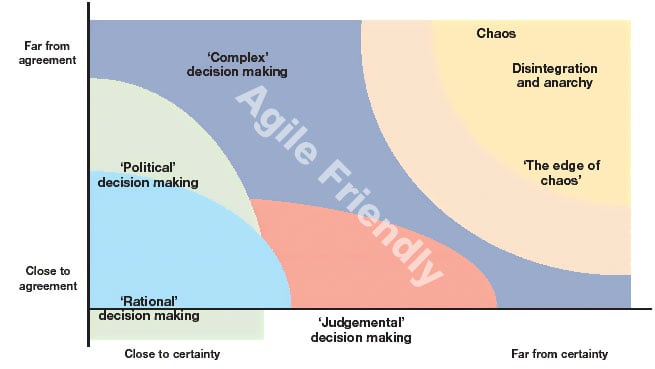
Stacey Diagram
Commonly Confused Agile Terms
- Agile Manifesto – a public declaration of the philosophy and principles of agile software development
- Agile Principles – the fundamental truths and shared values that drive behavior in agile methodologies
- Agile Projects – a project that is planned and executed based on tenets of Agile Manifesto
- Agile Methodologies – frameworks and processes whose practices support the Agile Manifesto principles, e.g. Scrum, XP, Kanban Crystal, Lean, TDD, DSDM, FDD
- Agile Methods – the processes that support agile philosophy
- Agile Practices – the activities that are the application of agile principles
Conclusion: PMI-ACP® Exam Study Notes – What is Agile?
This PMI-ACP® exam study note gives an overview of the project management, which can be divided into two major schools of thoughts – traditional waterfall and Agile. It has also explained what “methodologies” are and which project environments are suitable for the implementation of Agile project management.
Most Popular PMI-ACP Certification Articles
- Top 10 Tips to Prepare for the exam (I got all Proficient in my exam)
- How to Get 21 Contact Hours?
- Over 600+ FREE Quality Mock Exam / Practice Questions


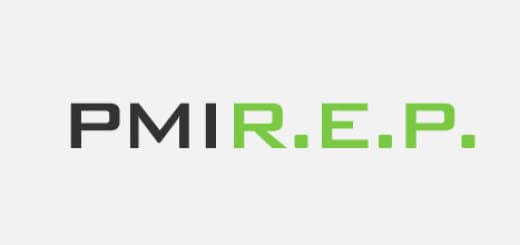
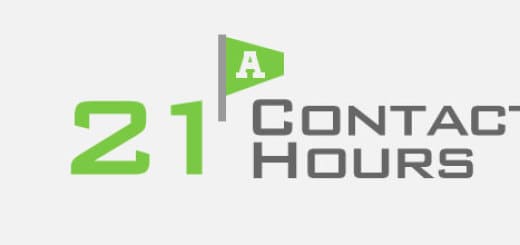

 Hi, my name is Edward Chung, PMP, PMI-ACP®, ITIL® Foundation. Like most of us, I am a working professional pursuing career advancements through Certifications. As I am having a full-time job and a family with 3 kids, I need to pursue professional certifications in the most effective way (i.e. with the least amount of time). I share my exam tips here in the hope of helping fellow Certification aspirants!
Hi, my name is Edward Chung, PMP, PMI-ACP®, ITIL® Foundation. Like most of us, I am a working professional pursuing career advancements through Certifications. As I am having a full-time job and a family with 3 kids, I need to pursue professional certifications in the most effective way (i.e. with the least amount of time). I share my exam tips here in the hope of helping fellow Certification aspirants!


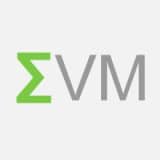


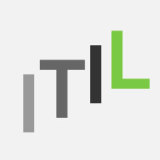
Great overview! In general, I would think that agile seems to make sense of most projects.